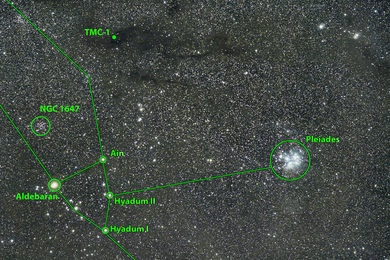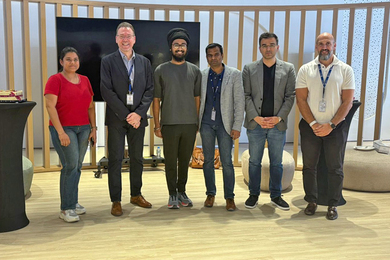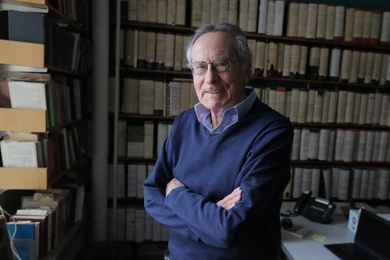Researchers at MIT and at the University of Texas Southwestern Medical Center in Dallas have identified a cell-surface receptor for high density lipoprotein (HDL), the "good cholesterol" whose presence in the blood is associated with a low risk for atherosclerosis.
The finding of the long-sought receptor might eventually lead to an understanding of how HDL helps prevent clogged arteries.
But that day is far in the future, warned Professor Monty Krieger of the Department of Biology, in whose laboratory the work at MIT was conducted.
"Much work remains to be done before we will be able to clearly define this new receptor's role in HDL metabolism and determine if it participates in metabolic pathways related to atherosclerosis," Professor Krieger said.
Atherosclerosis, the leading cause of death in Western industrialized countries, is characterized by the build-up of cholesterol and similar fatty compounds on the walls of the arteries. The risk of developing the disease depends in large measure on the relative amount of two particles, called lipoproteins, which carry cholesterol through the bloodstream. HDL is one of those proteins. The other is low density lipoprotein (LDL), known as "bad cholesterol" because the risk for atherosclerosis increases as the amounts of LDL in the blood increase.
These lipoproteins perform many functions in the body, including transporting cholesterol to tissues that convert cholesterol to steroid hormones-important regulators of many key body functions.
The finding, published in the January 26 issue of Science magazine, was covered by the New York Times, the Dallas Morning News and other newspapers. An accompanying commentary in Science magazine calls the identification of the receptor "an important advance" toward understanding the metabolism of HDL.
The authors of the Science paper are Susan Acton, Attilio Rigotti, Katherine T. Landschulz, Shangzhe Xu, Helen H. Hobbs and Professor Krieger. Drs. Acton and Rigotti, along with Mrs. Xu, were members of Professor Krieger's laboratory when the work was done. Dr. Landschulz worked with Professor Hobbs in the Departments of Internal Medicine and Molecular Genetics at the University of Texas center.
Until now, and despite extensive efforts by many laboratories, a well characterized HDL receptor had not been found. The identification and analysis of this new HDL receptor, along with ongoing studies of HDL metabolism throughout the world, may eventually provide insights into the mechanisms by which HDL lowers the risk of atherosclerosis and provides cholesterol for steroid hormone synthesis.
The HDL role of the receptor, SR-B1, was discovered as the MIT researchers were studying its other functions. Dr. Krieger told the New York Times that his colleagues at MIT had previously shown that the protein could bind to low-density lipoproteins and other compounds, but they only recently discovered that it could also bind tightly to HDL.
The MIT researchers joined forces with their colleagues in Dallas to use an antibody to the receptor to determine where in the body the receptor could be found. The scientists found that SR-B1 was concentrated in the liver, adrenal glands, testes, and the ovaries of mice, the places where HDL primarily is used to make either bile acids or steroid hormones, according to the New York Times report by Warren E. Leary.
"It was in precisely the right tissues it should have been in," Professor Krieger told the New York Times, "and that's what got us very excited."
About 21 years ago, Professors Michael S. Brown and Joseph L. Goldstein at the University of Texas Heath Science Center reported their discovery of a receptor for LDL. They received the Nobel Prize in 1985 for their work. Their landmark discovery and subsequent investigations of LDL receptors have provided major insights into basic mammalian cell biology, lipid metabolism and atherosclerosis. Dr. Krieger trained under Professors Brown and Goldstein in the late 1970s.
The HDL receptor finding "certainly helps to open some doors for investigation," Professor Krieger told the Dallas Morning News, but much work remains to be done before we will know precisely how this new receptor works and how it influences the biological activity of HDL.
The research was supported by grants from the Heart, Lung and Blood Institute, one of the National Institutes of Health, including a special Program of Excellence in Molecular Biology at MIT, The Perot Family Fund, and a Howard Hughes Medical Institute Postdoctoral Fellowship to Dr. Rigotti.
A version of this article appeared in MIT Tech Talk on January 31, 1996.





